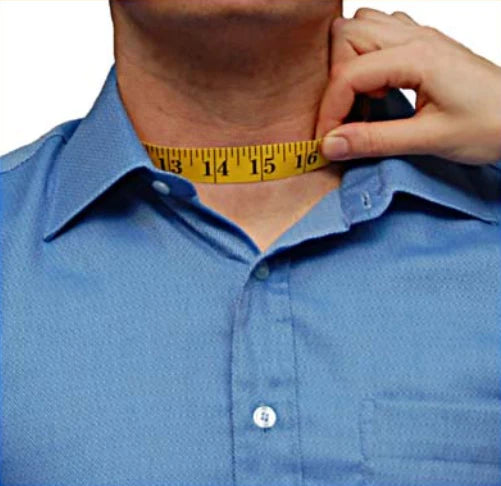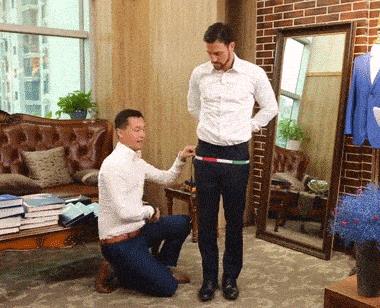
Taking Custom Measurements
Ordering a custom suit offers the advantage of having a perfectly tailored garment that fits you impeccably. To ensure the best fit possible, accurate measurements are crucial. Here's a guide on how to take custom measurements for a custom suit.
Use a Measuring Tape:
Obtain a soft, flexible measuring tape. Avoid using a metal tape measure, as it may provide inaccurate measurements.

Neck
- Wrap the measuring tape around your neck, just below the Adam's apple, in the area where a collar typically rests.
- Ensure that the measuring tape is snug against your skin but not too tight. It should be tight enough to prevent gaps but not so tight that it causes discomfort or restricts breathing.
- Make sure the measuring tape is parallel to the floor and not slanted or twisted.

Jacket Front Length
Stand straight with your arms at your sides. Measure from the base of your neck, where your collar would normally rest, down to the desired length for your jacket. This can vary depending on your preference and the style of the suit.

Jacket Back Length
Stand straight with your arms at your sides. Measure from the base of your neck, where your collar would normally rest, down to the desired length for your jacket at the back, around your buttocks. This can vary depending on your preference and the style of the suit.

Full Shoulder
Measure the width between your shoulder bones. Have someone assist you in measuring from the outer edge of one shoulder bone to the outer edge of the other. Keep the tape flat against your back for accurate results

Full Chest
Have someone assist you in measuring your chest. Stand up straight with your arms relaxed at your sides. Wrap the measuring tape around the fullest part of your chest, just under your armpits, and across your shoulder blades. Ensure the tape is snug but not too tight.

Stomach/Belly
Measure around the biggest part of the belly/stomach area. This is typically the area just above your belly button.
Ensure you are standing relaxed and the tape is held tight to the body. Breathe normally and do not puff out your belly or measure when bloated more than is usual.

Sleeve Length
Measure from the top of your shoulder down to the knuckle of your thumb, or where you'd like the sleeve to end. Do the same for the other hand.

Biceps
Measure around the biggest part of your bicep, you only need to measure one side.

Cuff/Wrist
Measure around the biggest part of your wrist, you only need to measure one side.

Hips
Measure around the fullest part of your hips and buttocks. Ensure the tape is level and not too loose or tight.

Forearm
Measure around the fullest part of your forearm. This is between your elbow and wrist. Ensure the tape is level and not too loose or tight.

Trouser Length
For trousers, measure from the part where you wear your belt on the hip to the desired length. If you prefer a particular break (the point where the pants rest on your shoes), mention this measurement as well in a note.
Do the same for the other leg.

Trouser Waist
Locate your natural waistline, which is typically the narrowest part of your torso, between your ribcage and hips. Stand up straight and relax your stomach. Wrap the measuring tape around your waistline, ensuring it is parallel to the floor and snug but not tight.

Thigh
If you have specific preferences for the fit of the pants, measure the circumference of your thighs. Wrap the measuring tape around the fullest part of the area, ensuring a snug but comfortable fit.

Knee
If you have specific preferences for the fit of the pants, measure the circumference of your knee. Wrap the measuring tape around the fullest part of the area, ensuring a snug but comfortable fit.

Calf
If you have specific preferences for the fit of the pants, measure the circumference of your calf. Wrap the measuring tape around the fullest part of the area, ensuring a snug but comfortable fit.

Cuff
If you have specific preferences for the fit of the pants, measure the circumference of your ankle. Wrap the measuring tape around the fullest part of the area, ensuring a snug but comfortable fit.

Crotch
Stand upright with your feet shoulder-width apart and your legs slightly apart. It's important to maintain a natural posture during the measurement process.
The crotch point is the area where the inseams of the pants intersect. It is situated between your legs, close to the perineum. Take a moment to familiarize yourself with this point before starting the measurement.


